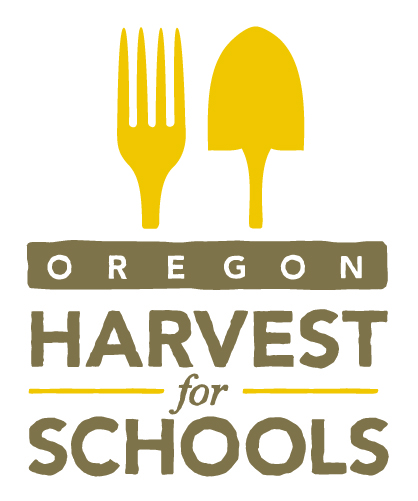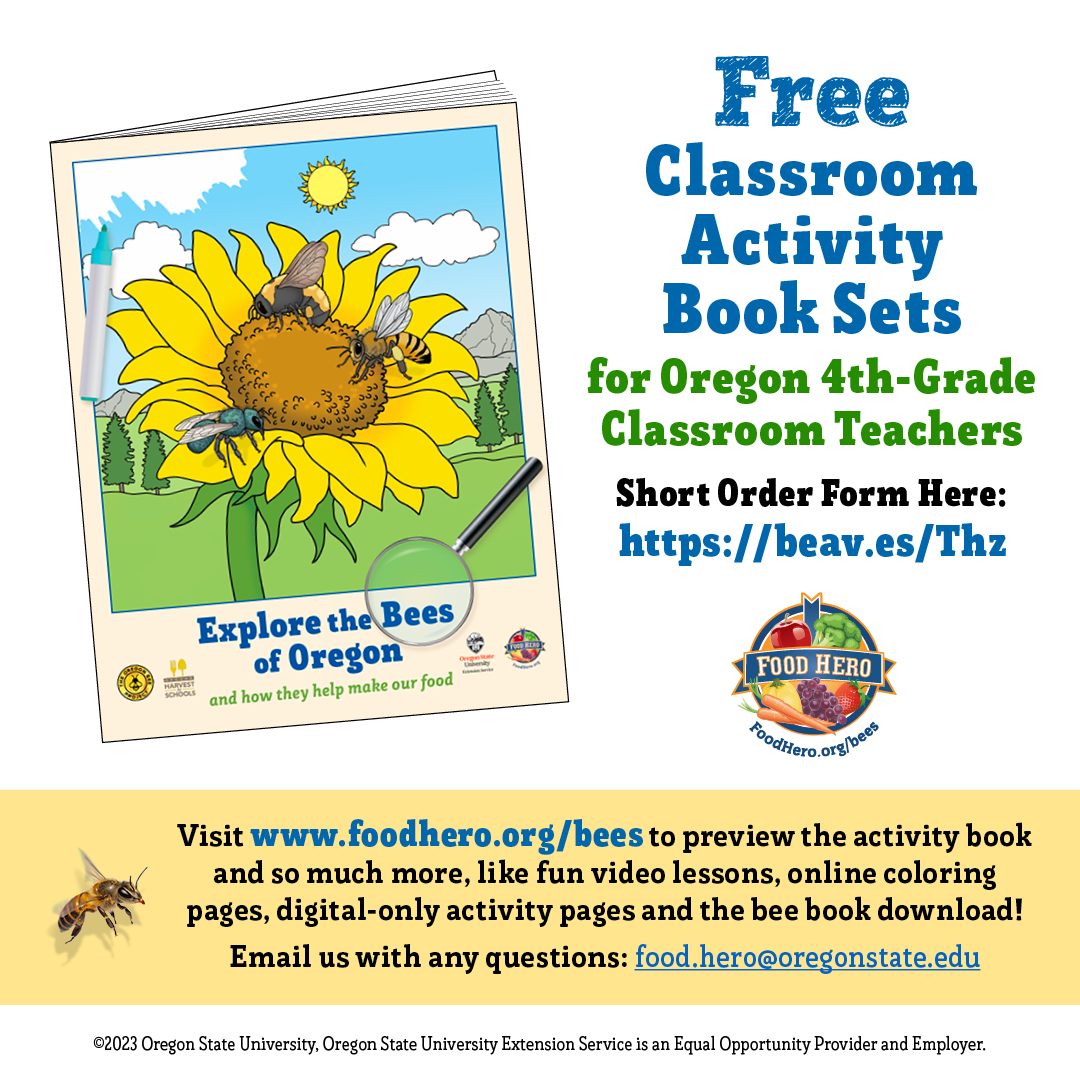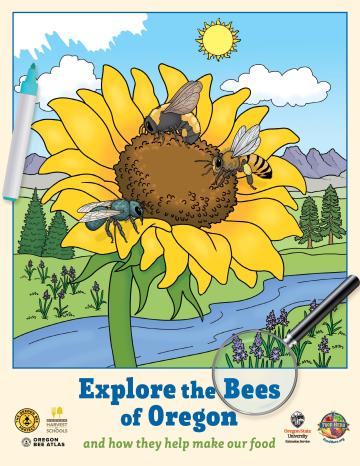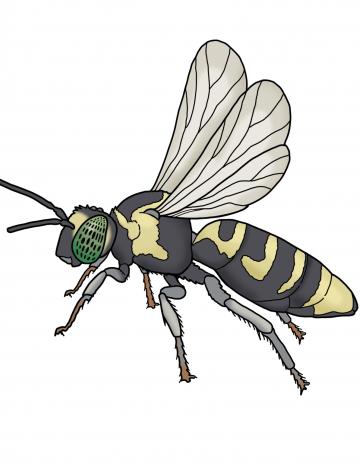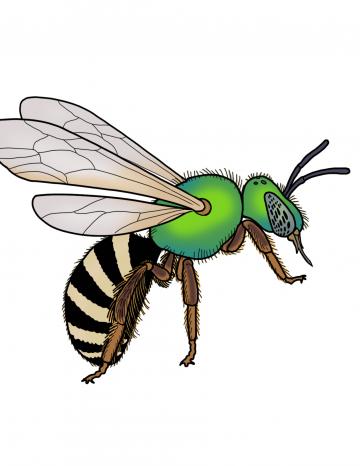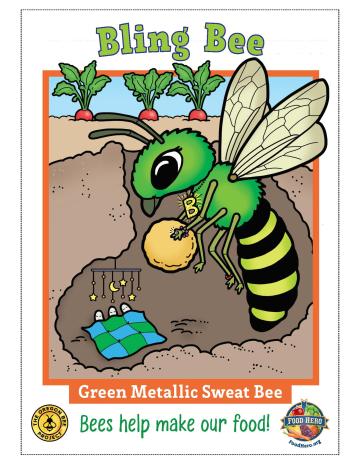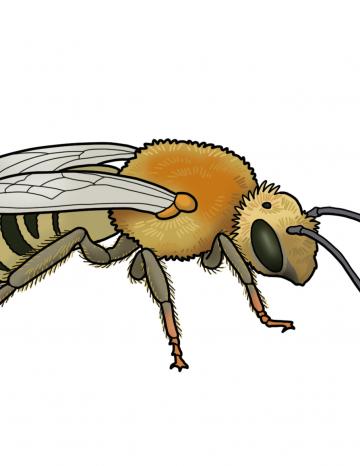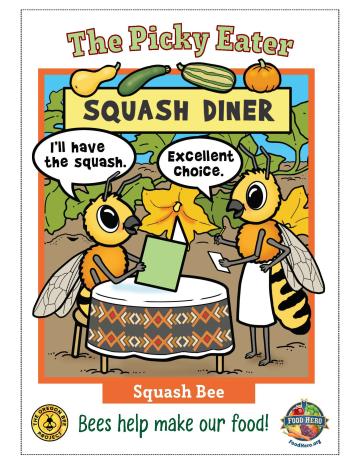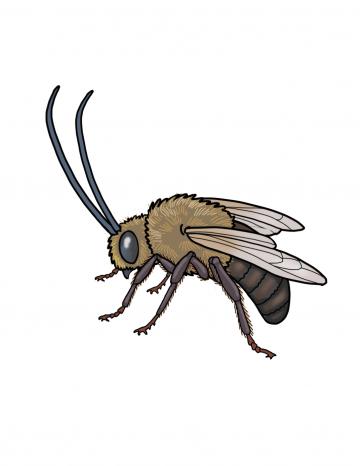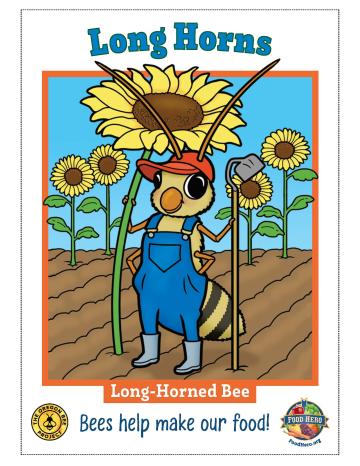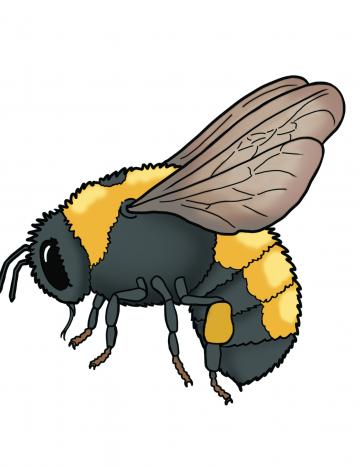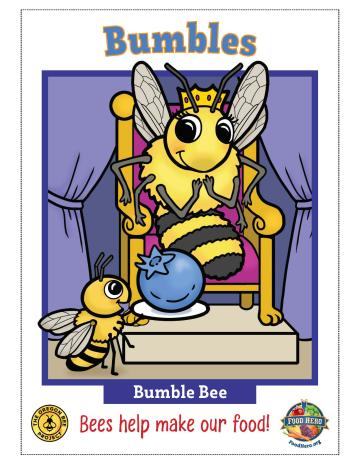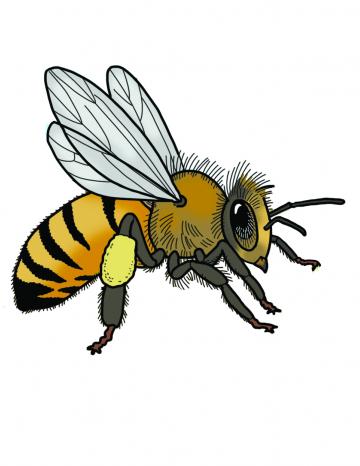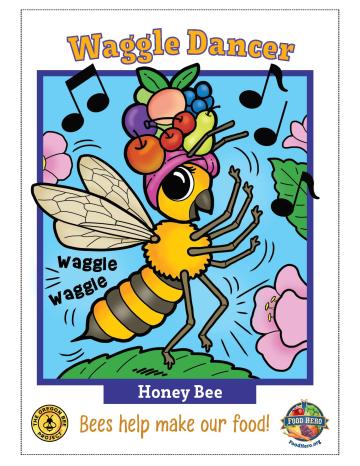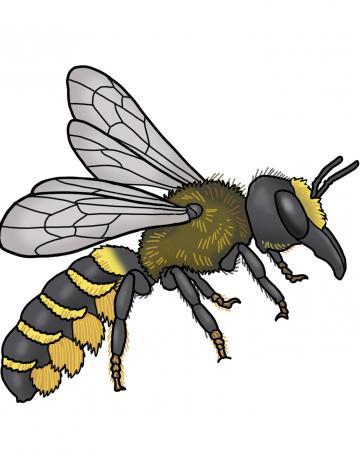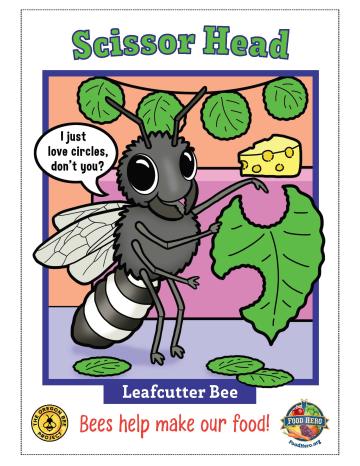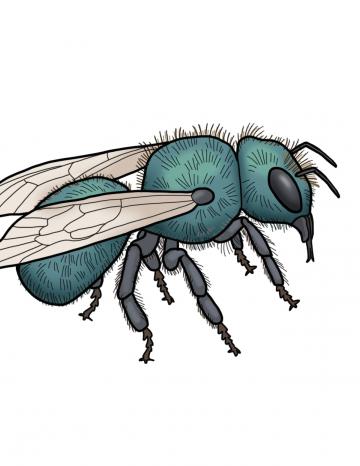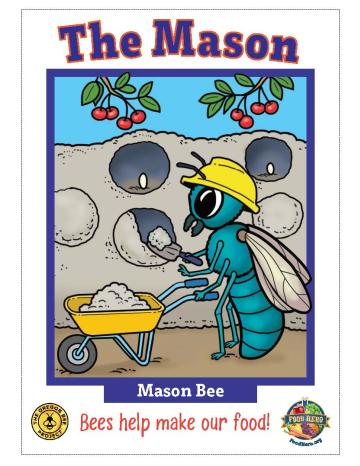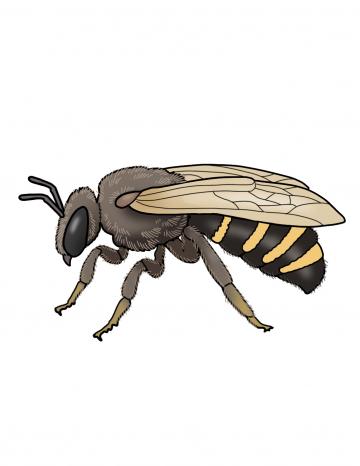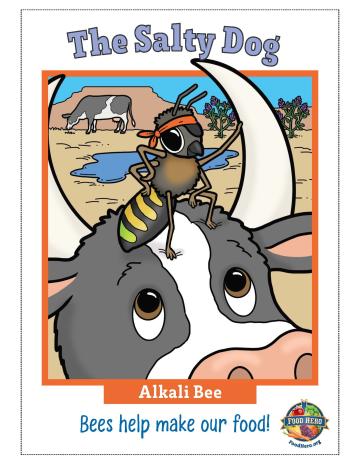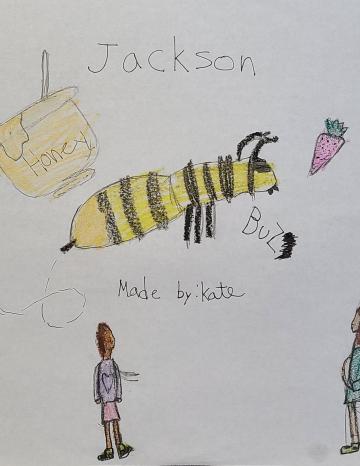Explore Oregon Bees is a bee-themed nutrition and garden environmental education activity book developed at Oregon State University by the Oregon Bee Project and Food Hero. The second edition (2023) is aligned to 4th grade educational standards, but like the first version (2020) there are activities, recipes and images engaging to all ages. Objectives include: broadening readers knowledge of the role bees play in pollination to make healthy foods, to increase willingness to taste vegetables and fruits, and empowering readers to know ways to help bees make healthy foods. The virtual toolkit brings the book alive digitally and includes bonus content. Online pages will continue to be updated as teacher feedback comes in!
Bee Book Download Volume 2 - web version
Volume 1 Bee Book Download - web version
Oregon 4th grade teachers sign-up: https://beav.es.Thz
Virtual Toolkit Education Units
 Pause
Pause
 Play
Play
1. Oregon Bees and How They Help Make Our Food
- Introduction and Fluency Tracker (Page 1)
- What Bees Do for Us (Page 2)
- Fun Facts About Bees and Bee Word Game (Page 7)
- Fun Facts About Bees: Word Game & True or False (Page 37)
- What You Can Do for Bees (Pages 38 & 39)
- Draw A Favorite Bee of Oregon (Page 40)
- Compare Bees Venn Diagram (Page 41)
- Bee Word Search (Page 42)
- What I Learned (Page 43)
- Trading Card Mini Poster - Carpenter Bee
- Trading Card Mini Poster: Fairy Bee
- Trading Card Mini Poster: Mining Bee
2. Solitary Bees, Squash and Cuckoo Bees and Pollination
- Solitary Bees
- What Bees Do For Us (Page 2)
- Pollination: How Does it Work? Parts of a Flower (Page 3)
- Parts of a Bee (Page 4)*
- Different Pollen Carrying Structures and Bees Make Healthy Food Acrostic Poem (Page 5)*
- Take a Closer Look: Bee Parts and Plant Parts (Page 6)
- Pollination in Action and Squash Bees in Oregon (Page 15)
- Three Sisters Soup and Recipe Math Challenge (Page 16)
- Three Sisters Story and Coloring Sheet (Page 17)
- Trading Card Mini Poster: Cuckoo Bee
- Trading Card Mini Poster: Squash Bee
3. Green Metallic and Long-Horned Bees and Fertilization
- Plant Parts: Fruits and Vegetables (Page 10)
- Plant Parts: More About Seeds and Plant Part Salad (Page 11)
- Cranberry Oatmeal Balls and Recipe Math Challenge (Page 23)
- Quick Tomato Salsa and Recipe Math Challenge (Page 28)
- Trading Card Mini Poster: Long-Horned Bee
- Trading Card Mini Poster: Green Metallic Sweat Bee
5. Leafcutter, Mason, and Alkali Bees and Where They Live
- VIDEO: Meet the Mason, Leafcutter, and Alkali Bees
- Mason Bees: Coloring and Hidden Pictures (Page 18)
- Cherry Crumble and Mason Bees
- Leafcutter Bees: Coloring and Hidden Pictures (Page 20)
- Tasty Hamburger Skillet and Leafcutter Bees
- Alkali Bees: Coloring and Hidden Pictures (Page 25)
- Recipe - Cherry Oat Crumble: Mason Bee
- Recipe - Tasty Hamburger Skillet - Leafcutter Bee
- Solitary Bees (Pages 12 & 13)
- Super Sundae and Recipe Math Challenge (Page 19)
- Stuffed Potatoes and Recipe Math Challenge (Page 21)
- Wild Bees' Nests (Page 34)
- Managed Bees of Oregon (Page 35)
- Alkali Bee Trading Card Mini Poster
- Trading Card Mini Poster: Leafcutter Bee
- Trading Card Mini Poster: Mason Bee
Explore the Bees of Oregon and How They Make Our Food
Meet the Squash and Cuckoo Bees
At Food Hero, we are celebrating World Bee Day by releasing a series of kid-friendly bee videos, activities, and more that will explore the common types of bees in Oregon and how they help grow some of our favorite foods.
Our first video introduces the Squash and Cuckoo Bees. Thanks to a special process called pollination, Squash Bees have a close link to Indigenous Peoples and the squash plant. Join your tour guide, Buzz Bumble Bee, to discover more about pollination and why this process is so important to farmers who grow the food we eat.
Meet the Green Metallic and Long-Horned Bees
Did you know fruits all start as flowers? Do you know the difference between a fruit, a vegetable, and a seed? Whether we call them fruits, vegetables or seeds, the plant parts we eat are packed with different nutrients and we need bees to help them grow!
In our second video, you will meet the Green Metallic Sweat Bee and the Long-horned bee. We’ll follow them in their journey as they work to fertilize the flowers that produce the nutritious ingredients used in some of our favorite recipes.
Meet the Bumble and Honey Bees
Bees help pollinate many different crops that we eat, including types of fruits, vegetables, nuts and seeds. Bees also help pollinate crops that feed livestock, like cows and chickens, and provide us with dairy and protein foods.
In our third video, you will meet the Bumble Bee and Honey Bee. Find out which Oregon crops these bees help produce that can help us grow, play, learn, and stay healthy!
Meet the Mason, Leafcutter, and Alkali Bees
Did you know that for over 9,000 years, humans have been collecting wild bees’ nests? Eventually, they figured out how to raise wild bee species. Bees raised by humans are called managed bees.
In our fourth video, we will meet three managed bees that help farmers produce healthy foods we eat: the Mason, the Leafcutter, and the Alkali Bees.
As we finish up our tour of the bees in Oregon, I will also share what you can do to help bees.



